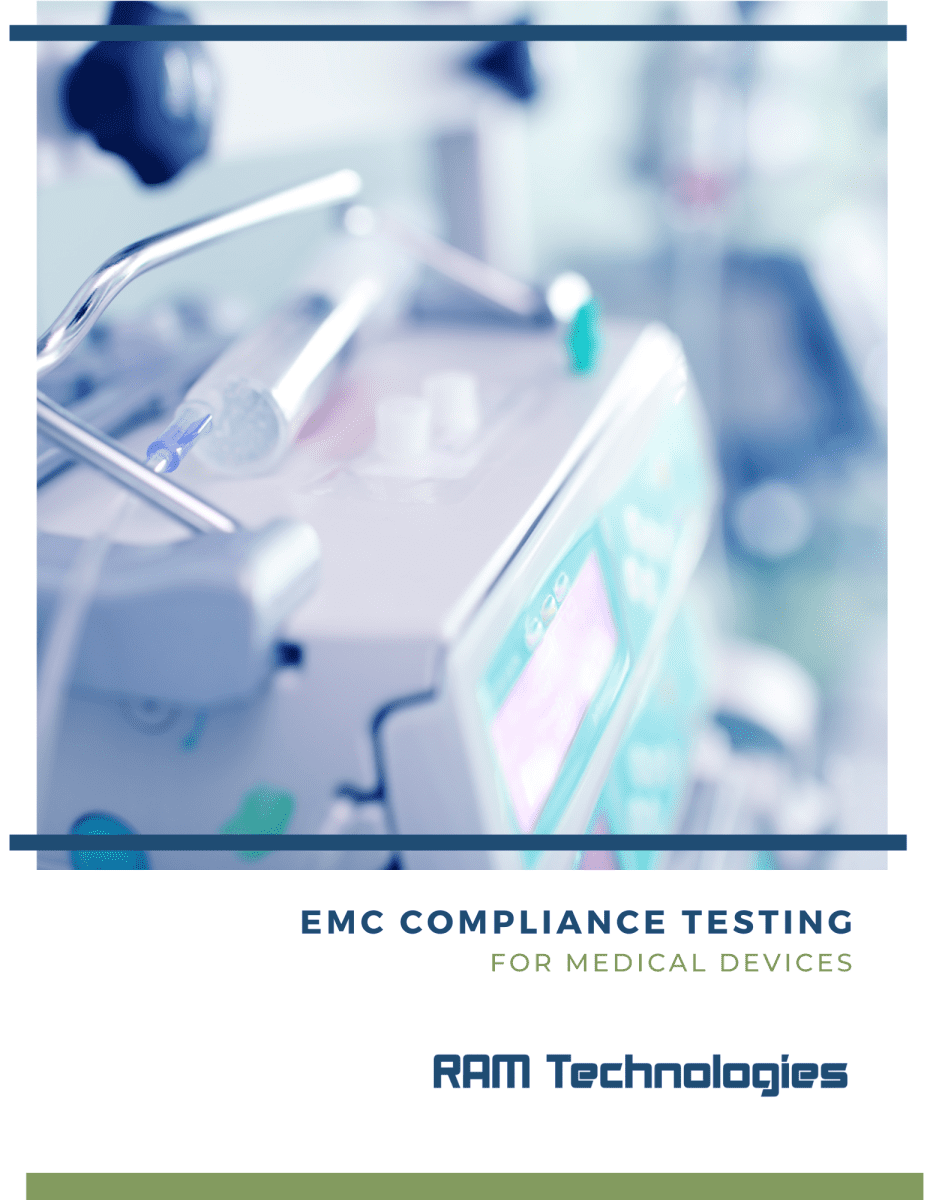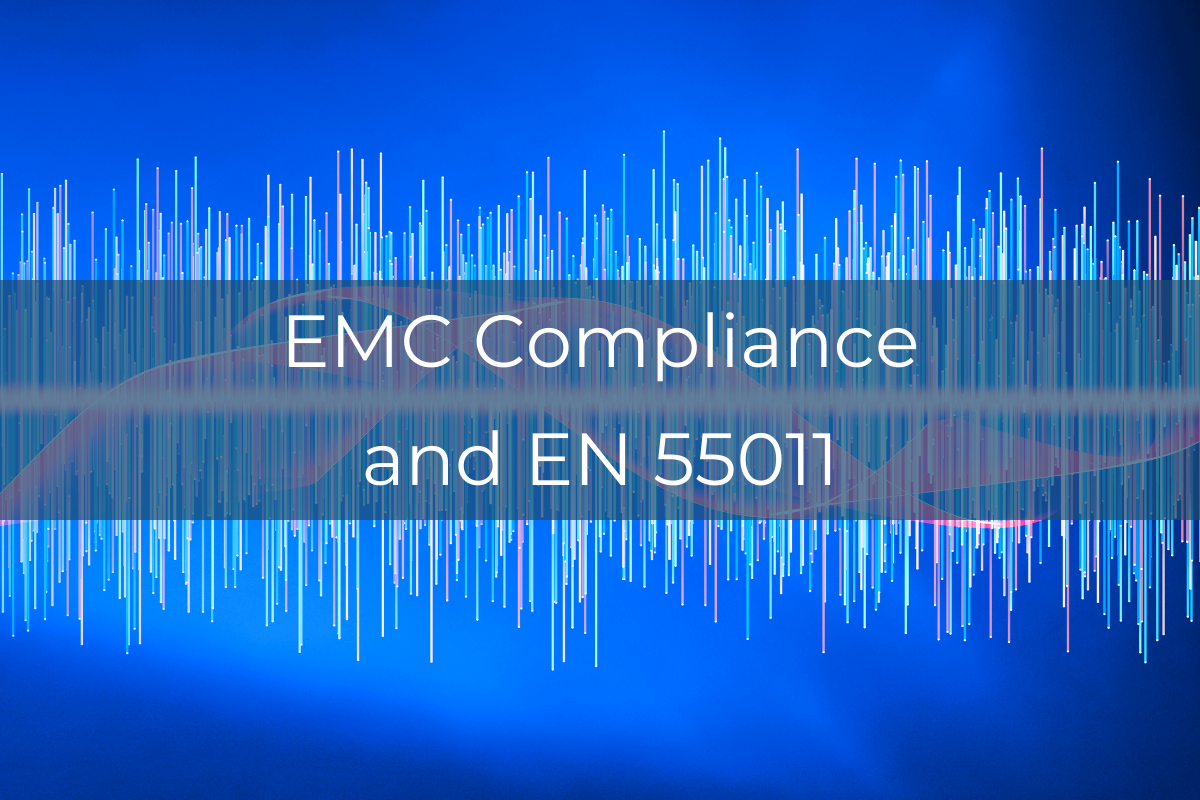Getting your medical device to market is a complex process, and one of the essential steps is passing all necessary electromagnetic compatibility (EMC) tests. These tests ensure that your device doesn’t emit too much electromagnetic interference (EMI), which can come in the form of conducted or radiated emissions. EMC compliance also verifies that your medical device will continue to work properly in the presence of other electromagnetic phenomena.
There are several different EMC test standards that manufacturers need to comply with. Today we’ll go through the EN 55011 standard.
EN55011 – Conducted and Radiated Emissions (CISPR 11)
EN 55011, also known as IEC/CISPR 11, is a regulation that applies to conducted and radiated emissions. Medical devices that either use or generate radio frequency energy and have signals with frequencies between 0Hz and 400GHz will be included in CISPR 11 regulations. If equipment is covered by other CISPR standards for product or product families, they don’t need to be included in CISPR 11.
Measurements for CISPR 11 only need to be conducted for frequency ranges of 9kHz to 400GHz to ensure there are no radio-frequency disturbances. Most of the guidance talks about industrial, scientific, and medical (ISM) radio bands – bands of radio frequency that are used for medical, scientific, and industrial reasons that aren’t related to telecommunication. ISM bands can vary based on region, but some have been harmonized.
Groups of ISM Equipment
There are two groups of ISM equipment: Group 1 and Group 2.
Group 1
Group 1 ISM equipment refers to general-purpose applications of equipment for class A or class B. Essentially, equipment not covered by Group 2 definitions will be included in Group 1. This can be scientific equipment, medical electrical equipment, machine tools, laboratory equipment, and more.
Group 2
All group 2 ISM equipment, either class A or class B, has radio frequency (RF) energy that ranges between 9kHz and 400GHz and is used for industrial, scientific, or medical purposes. This could include devices that generate and use radio waves locally, such as microwave ovens and induction heaters, or devices that transmit radio waves over a distance, such as wireless LAN routers and medical imaging equipment.
Some medical electrical equipment falls under this group 2 category.
ISM Equipment Classes
There are also two classes of ISM equipment – Class A and Class B. The main difference between these two classes is the emission limits for each.
Class A devices can be used in all areas but residential or similar areas. They are connected to public mains (the electrical grid), are industrial in nature, and have higher emission limits.
Class B devices can be used in residential areas and have lower emission limits. These are also connected to public mains.
Testing Equipment for EN 55011 Compliance
While Class B equipment needs to be measured on a test site, Class A equipment can be measured in situ – at an installation site. This accommodation allows Class A equipment to be tested under specific operating conditions more easily.
Measuring distances for radiated emissions depends on the class and type of equipment being used. It can range from 3m to 100m.
What to know about Compliance with EN 55011 and PSUs for Your Medical Device
RAM Technologies is a PC-based power supply unit (PSU) manufacturer. Our PSUs are not directly tested for compliance with standards like EN 55011. Only whole medical devices can be certified to the standard. However, we design our units to comply with the standard.
You can find information on our downloadable data sheets, available on each power supply page.
RAM Technologies’ power supplies are 60601-1 3.2 certified and meet 60601-1-2 EMC standards. When you’re designing your medical device and need help with a PSU, contact us for details.

Download the EMC Summary
The road to putting your medical device on the market includes many steps, including passing all necessary electromagnetic compatibility (EMC) testing. These tests play an essential role in ensuring your device doesn’t emit a significant amount of electromagnetic interference, which could be via conducted or radiated emissions. Download our guide to EMC compliance to learn more about what medical device manufacturers should consider.
More Resources:
Downloadable Guide to IEC 60601-1
EMC Compliance and EN 61000-3-2: Harmonics
EMC Compliance and EN61000-3-3: Flicker
EMC Compliance and EN 61000-4-2: ESD Level 3
